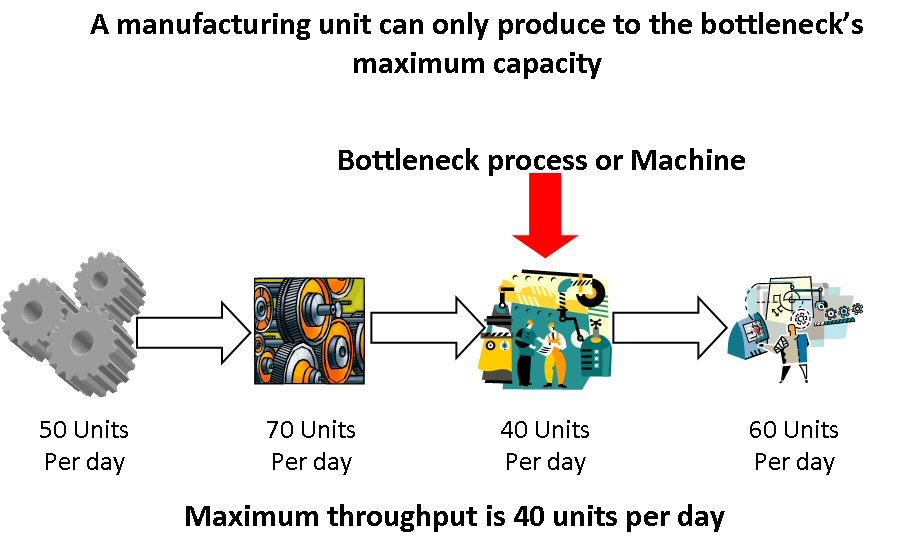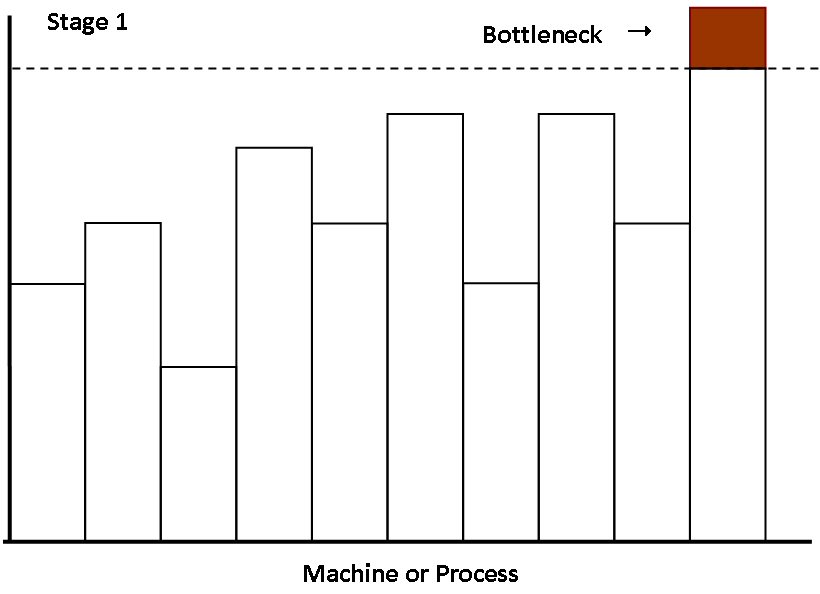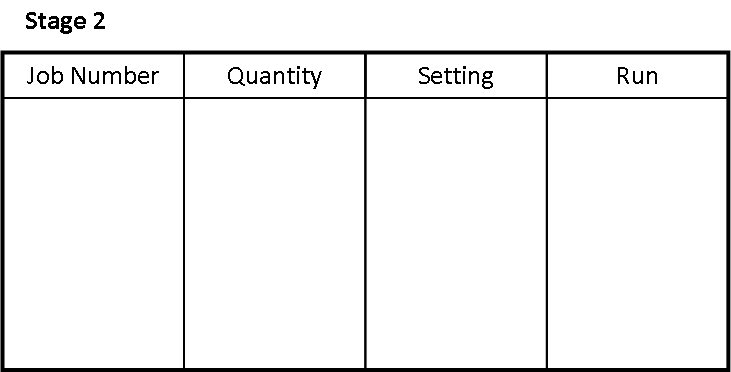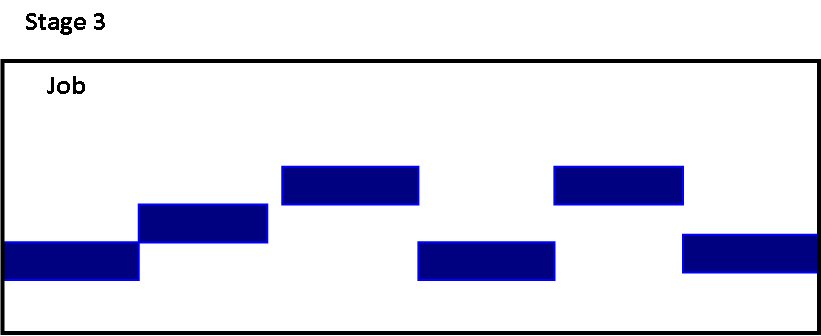5.16 - Bottleneck Scheduling
Bottleneck scheduling is the practice of scheduling a manufacturing centre around its most constrained resource. It is a relatively simple concept that can be rapidly applied given the right tools (e.g. spreadsheet
or finite scheduling software).
The process of bottleneck scheduling usually takes place at the lowest levels of scheduling (see guides 5.13 & 5.14).
A bottleneck is any resource whose capacity is equal to or less than the market demand placed on it.

A NON-bottleneck is any resource whose capacity exceeds the market demand placed upon it.
Typical procedure
A typical bottleneck procedure would include the following:-
- Each week use the cell process flow routes and work contents by part number, explode the gross product or component demand into a bar chart showing hours of work capacity required for each machine type (see stage 1 diagram). Initially pick only those few heavily loaded machines where market demand is greater than capacity. Processes which have a market demand less than their capacity represent less of a problem.
- For any over-capacity machine or process examine the list of jobs and look at quantities required, batch sizes, changeover times and run times for these jobs (see stage 2 diagram).
- Based on information given in (2), structure the load to maximise the effectiveness of the bottleneck, by interleaving runners, repeaters and strangers each week and each day up to the level of the bottleneck capacity. Such schedules will even the load, maximise utilisation of capacity and increase the reliability of delivery (see stage 3 diagram).
For Kanban systems, once the bottleneck machines have been scheduled with their sequence work in time order, the flow of the Kanbans from them automatically phase flow of work through the non-bottleneck machines.
The key to sucesses is to combine the judgement and knowledge of the cell controller in a levelled scheduling process, supported by rapid computational aids and not to try and automate him out of the decisions.
The Development of a Bottleneck Schedule



Notes:-
- Identify bottleneck machine (Stage 1)
- Examine list of jobs (Stage 2)
- Develop a bottleneck schedule (Stage 3). For a small cell (30 machines), it may be possible to do this manually for what is only a small portion of the order book.